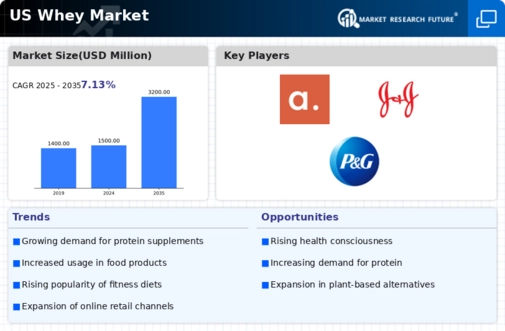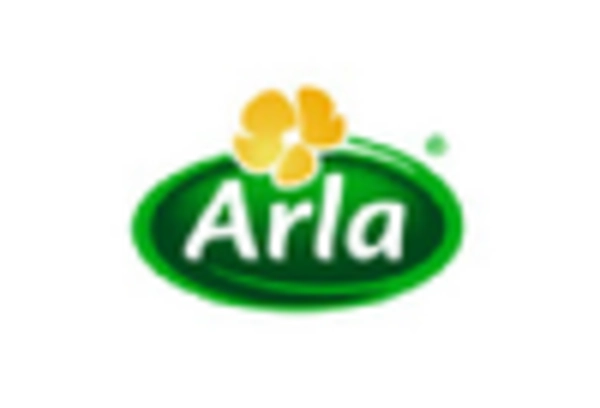Growing Demand for Functional Foods
The whey market is witnessing a growing demand for functional foods, which are products that provide health benefits beyond basic nutrition. Whey protein, known for its muscle-building properties, is increasingly incorporated into various food products, including snacks, beverages, and meal replacements. This trend aligns with consumer preferences for convenient, health-oriented options. Market data suggests that the functional food sector is expected to grow by 10% annually, with whey protein playing a crucial role in this expansion. As manufacturers innovate and create new functional food products featuring whey, the market is likely to see increased competition and diversification.
Expansion of Plant-Based Alternatives
The whey market faces a transformative shift as the expansion of plant-based alternatives gains momentum. While whey protein has long been a staple in the protein supplement sector, the rise of veganism and plant-based diets prompts consumers to explore non-dairy protein sources. This trend may challenge traditional whey products, yet it also presents opportunities for innovation within the whey market. Companies are increasingly developing hybrid products that combine whey with plant-based proteins to cater to diverse consumer preferences. As the market adapts, it is essential for stakeholders to monitor this evolving landscape and consider how to integrate plant-based options into their offerings to remain competitive.
Rising Demand for Protein Supplements
The whey market in the US experiences a notable surge in demand for protein supplements, driven by an increasing consumer focus on fitness and health. As individuals seek to enhance their physical performance and recovery, whey protein emerges as a preferred choice due to its high biological value and rapid absorption. Recent data indicates that the protein supplement segment is projected to grow at a CAGR of approximately 8% through 2026. This growth is likely to be fueled by the rising popularity of fitness regimes and the growing awareness of the benefits of protein intake. Consequently, the whey market is positioned to capitalize on this trend, as consumers increasingly incorporate whey protein into their diets to meet their nutritional needs.
Technological Advancements in Production
Technological advancements in production processes are significantly influencing the whey market. Innovations in extraction and processing techniques enhance the quality and efficiency of whey protein production. For instance, membrane filtration technology allows for the separation of whey proteins with minimal denaturation, preserving their functional properties. This not only improves product quality but also reduces production costs, making whey protein more accessible to consumers. As these technologies continue to evolve, they may lead to the development of new whey-based products that cater to specific dietary needs, thereby expanding the market's reach and appeal.
Increased Awareness of Nutritional Benefits
The whey market benefits from heightened awareness regarding the nutritional advantages of whey protein. Consumers are becoming more informed about the role of protein in muscle maintenance, weight management, and overall health. This growing knowledge is reflected in the increasing sales of whey protein products, which have seen a rise of approximately 15% in the last year alone. Health professionals and nutritionists are advocating for the inclusion of whey protein in daily diets, further driving consumer interest. As a result, the whey market is likely to experience sustained growth as more individuals recognize the importance of protein in their dietary regimens.

















Leave a Comment